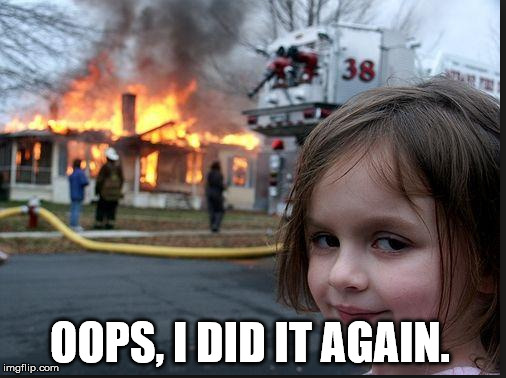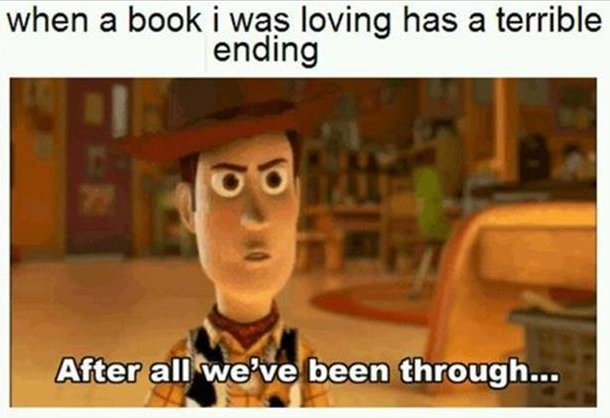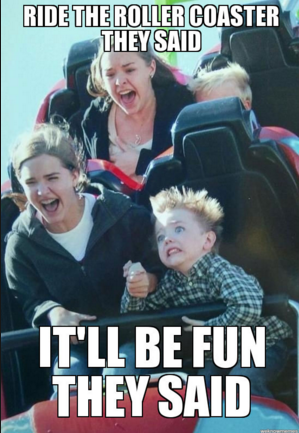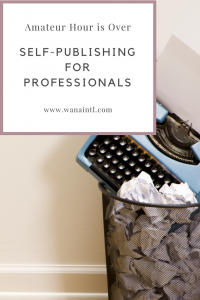
Humans are hard-wired for story. For thousands of years, every culture on every continent has used stories to pass on information of every kind. Why? Because humans are wired for story.
We might not recall facts, but story has a way of embedding into our minds and remaining with a tenacity only rivaled by music.
There’s a reason the two (story and music), when paired together, have double the power. Just as a song can get stuck in our head, stories can, too. A song or story can become addictive by accident, but true artists create addicts (fans) with intention and design.
Story as Music

It’s interesting that patients with advanced Alzheimer’s often lose the capability to remember family, friends, names, dates, but can sing a song from their youth and recall every lyric. I never cease to be amazed how I might forget where my keys are, yet I can hear a song from thirty years ago and know every line.
One reason is great songs also tell riveting stories. The second is great music is delivered in a structural way that hooks, then binds into our gray matter.
Great stories are exactly the same. It isn’t enough to have an incredible story idea.
The goal is to deliver that story idea first with a HOOK, then with a structure, pacing, tempo, timing, and climax that will remain with the reader longer than purple rain 😉 .
Just as music must possess a certain kind of intrinsic structure in order to optimally resonate (I.e. a hook in the lyrics/chorus), superlative stories must do this as well.
We Got the Beat
We got the beat, we got the beat…YEAH! We got the beat!
Narrative structure is a critical skill. The single biggest reason most novels flop? Structure. Pretty prose does not a novel make.
Each of these blogs will build upon the previous lesson so feel free to go back to last post to catch up. Yes, I’ll be mixing metaphors more than a 90s DJ but y’all are sharp.
By the end of this series, my goal is to equip you with the fundamental skills essential to honor our craft, regardless if we are plotters, pantsers, or plotsers.
In fact, let’s take a moment here. I don’t even care to discuss plotting, outlining, pantsing, notecards, spreadsheets, etc. Why? Because those topics are not salient to what we’re discussing here.

HOW any writer utilizes structure is ‘process,’ thus completely up to the writer and none of my business.
I don’t care if your process involves a salt circle and channeling a spirit guide for nifty ideas so long as, at the end, there’s a finished novel that respects and values the reader’s TIME.
If your process involves body glitter, while reading tea leaves and wearing a tutu…I DON’T CARE. Unless you’re turning out mind-blowing, amazing novels readers inhale…then PLEASE share precisely which body glitter, tea and tutu is helping you do that… because I have Prime, free shipping, and no pride.
What I do care about is that you, me, all of us respect what we do enough to learn how to do it with excellence. Anything less is intellectual laziness and disrespectful to ourselves, our art, and our readers.
*tucks away soap box*
Don’t Want No Scrubs
No, I don’t want your free book. No, not gonna pay a dime. And no, I don’t wanna read it nowhere. No, wastin’ none of my time.
No, I don’t want no scrub. A scrub is a book that can’t get no love from me. Tweeting out the messenger side of a free web site…tryin’ to holler at me.
Get THAT out of your head, LOL.
Anyway, structure is one of those topics that I feel gets overlooked far too much, which is why Amazon is bulging with ‘scrub books’ that talk a good game, but in truth, have nothing to offer readers (unless one counts buyer’s remorse).

There are a lot of workshops designed to teach new writers how to finish a ‘novel’ in four weeks or three or two or whatever. And that is great…if a writer possesses a solid understanding of structure.
If not? At the end of 4 weeks, you could very likely have a 60K word mess that no editor can fix (but that may require a salt circle to protect the unsuspecting world from it escaping).
Some of you might be in the midst of having to face some hard truths about your book. If you’ve been shopping that same book for months or years, and an agent has yet to be interested, likely structure is the problem.
If you went ahead and self-published, but sales are lackluster? Likely ‘promotion’ not the problem, product is. Many of you might have a computer full of unfinished novels. Yes, again, structure is the most likely culprit.
Oops! I Did It Again

Been there *fist bump*. Plenty of my own bright ideas languishing in literary limbo, which was why I made it my mission to understand everything possible regarding narrative structure.
Good news is that most novels can be fixed, although many times that requires leveling everything to the foundation and using the raw materials (original idea) to begin anew…the correct way and killing a lot of little darlings along the way.
Last post, I broke the bad news. Novels have rules. Sorry. They do. I didn’t make this stuff up. When we don’t follow the rules, bad things happen. Just ask Dr. Frankenstein.
Authors who break the rules do so with a fundamental understanding of rules and reader expectations. Remember the pizza analogy? We can get creative with pizza so long as we do so with an appreciation for consumer expectations.
A panko crusted trout served on mango-infused naan bread might be super clever…but is not recognizable as a pizza. We can call it pizza until we’re blue and a consumer will just think we’re a nut.
Same with any story, regardless of length. Readers have expectations. Deviate too far and we will have produced a commodity so far off the standard expectations that readers won’t touch it, which is why agents won’t rep it. They are in the business of creating best-selling authors, not most-clever authors.
One pays way better.
This said, I can tell if a writer understands structure in ten three pages. So can an agent.
Doctor, Doctor!
Can’t you see I’m burning, burning…?
Yep.

Agents, editors, proofreaders, craft experts. We can see your WIP is burning and why, because we’re trained diagnosticians who spot symptoms of fatal story ‘diseases’ at a glance. No, we don’t need to read the whole book. Really.
***Much like a neurologist doesn’t need to saw open a patient’s head to know that person’s suffered stroke.
Last time, we zoomed in and explored the most fundamental building blocks of a story. Today, we’re going to get an aerial shot—the Three Act Structure.
Aristotelian structure has worked for a couple thousand years for very good reasons. There are variations of this design, sure. But there’s something fundamentally resonant about three acts. Beginning, middle, end.
Cut off a song halfway through a chorus, and a three-year-old will call foul. Stop a bedtime story in the middle. A four-year-old won’t fall for that trick. How does it END?
We can get creative, but get crazy at our own risk.
We’ll Be Counting Stars
Let’s stop counting dollars, let’s start counting stars….

I understand that this is not a hard and fast rule, but still fairly safe to assert good books sell better than crappy books. How, then do we write a great story?
Ideally, our story’s tension will steadily rise from the beginning to end, growing progressively more intense until the grand finale, much like a symphony. But for a more visceral explanation of story, I prefer to compare the larger story structure to roller coasters.
People line up for great books for the same reasons they stand in withering summer heat to ride the latest roller coaster, and even pay extra for fast passes to skip to the front.
They yearn for a THRILL.
The Thrill of It All
Well, that’s my story, you’ll be sticking to it, since I’m a master of the lie. Forget your problems that don’t even exist, cuz my book will make you high…

I want you to envision the best roller coasters, how they are put together. All thrill rides begin with an immobile metal bar that closes over your lap. No getting of the ride now (the story hook).
Then there’s an initial slow, creeping up, up, up a hill where your gut twists from fear laced with anticipation (Inciting Incident that introduces the story), a small dip to catch your breath, and then (turning point) you’re committed to the very end when the bar unlatches.
If the biggest loop, wildest twist or tallest hill is at the beginning of the ride (story), the rest of the ride cannot help but be a complete letdown because of poor design.
Engineers know this (great writers do, too). This is why no thrill ride is even built until there is a prototype/design that satisfies investors that park patrons will LOVE it.
Writers are wise to do this as well.
I Hate You, I Love You
I hate you. I love you. I hate that I love you. I hate that it’s past two. Should sleep but don’t want to….

Great stories and great rides. We hate them and love them and hate that we love them. Now, let’s go and WRITE one 😀 .
Theme parks know it’s stupid to invest millions of dollars and countless man hours into something that by design no one will bother waiting in line to ride. Or a ride so bad it will infuriate anyone who bothered to stand in line…who will then tell every single person they find how awful the experience was.
Same happens with books.
Engineers fundamentally understand that thrills are crafted, not accidental. They grasp that an optimally designed roller coaster gives escalating thrills—bigger and bigger hills, twists, turns, dives, climbs and loops—with fewer and fewer troughs to catch a breath.
This all inevitably leads up to the largest loop/twist/inversion that then deescalates with incrementally slower and smaller loops and turns. The ride all culminates with smooth glide home to the other side of where it all began.
Every person locked on that ride desperately wants it all to end, but they do so with a mix of terror, dread and glee. Riders stagger away, breathless. They’re simultaneously thrilled and crushed it went so quickly.
So they stand in line AGAIN (or pay big bucks for fast-passes to skip to front).
Stitches
I thought that I’d been hooked before, but no book ever left me quite this sore. Your hooks sunk deeper than a knife, now I need book two to bring me back to life….

These are REAL fans…
When writers NAIL structure, they can design a similar ride—something that delivers the pain/pleasure readers crave to feel ALIVE. To SIZZLE with life!
We want readers who stay up all night (against their will), who will happily endure the book-hangover and tell all their friends to get in line for the same experience.
Sure, runaway book success can happen by chance, but luck favors the prepared.
We can design stories that lock readers onto a thrilling, chilling, mind-blowing emotional roller coaster and heck of a ride. Crafted properly, readers will be begging for ‘the ride’ to be OVER-AND-OMG-I-CANNOT-TAKE-IT-BUT-I-CANNOT-STOP-I-MUST-KNOW. Readers will beg for it to end…then be depressed when it actually does. How we do that is STRUCTURE 😉 .
For anyone who longs to accelerate their plot skills, I recommend my On Demand Plot Boss: Writing Novels Readers Want to BUY. Two hours of intensive plot training from MOI…delivered right to your computer to watch as much as you like 😀 .
Or to make stabbing motions at my head with a pen.
I look forward to helping you guys become stronger at your craft. What are some of your biggest problems, hurdles or misunderstandings about plot? Where do you most commonly get stuck?
I love hearing from you!
And am not above bribery!
What do you WIN? For the month of FEBRUARY, for everyone who leaves a comment, I will put your name in a hat. If you comment and link back to my blog on your blog, you get your name in the hat twice. What do you win? The unvarnished truth from yours truly. I will pick a winner once a month and it will be a critique of the first 20 pages of your novel, or your query letter, or your synopsis (5 pages or less).
***January’s winner is Maria D’Marco. Please send your first twenty pages (5,000 words) double spaced in 12 point Times New Roman font (12 pint) with one-inch margins in a Word doc to kristen at wana intl.com.
CLASSES!
Business of the Writing Business: Ready to ROAR!
 Instructor: Kristen Lamb
Instructor: Kristen Lamb
Price: $55.00 USD
Where: W.A.N.A. Digital Classroom
When: Thursday, February 15, 2018, 7:00-9:00 p.m. EST
Being a professional author entails much more than simply writing books. Many emerging authors believe all we need is a completed novel and an agent/readers will come.
There’s a lot more that goes into the writing business…but not nearly as much as some might want us to believe. There’s a fine balance between being educated about business and killing ourselves with so much we do everything but WRITE MORE BOOKS.
This class is to prepare you for the reality of Digital Age Publishing and help you build a foundation that can withstand major upheavals. Beyond the ‘final draft’ what then? What should we be doing while writing the novel?
We are in the Wilderness of Publishing and predators abound. Knowledge is power. We don’t get what we work for, we get what we negotiate. This is to prepare you for success, to help you understand a gamble from a grift a deal from a dud. We will discuss:
- The Product
- Agents/Editors
- Types of Publishing
- Platform and Brand
- Marketing and Promotion
- Making Money
- Where Writers REALLY Need to Focus
A recording of this class is also included with purchase.
Self-Publishing for Professionals: Amateur Hour is OVER
 Instructor: Cait Reynolds
Instructor: Cait Reynolds
Price: $99.00 USD
Where: W.A.N.A. Digital Classroom
When: Friday, February 16, 2018, 7:00-10:00 p.m. EST
Let’s get down to brass tacks. Are you going to go KDP Select or wide distribution with Smashwords as a distributor? Are you going to use the KDP/CreateSpace ISBN’s or purchase your own package? What BISAC codes have you chosen? What keywords are you going to use to get into your target categories? Who’s your competition, and how are you positioned against them?
Okay, hold on. Breathe. Slow down. I didn’t mean to induce a panic attack. I’m actually here to help.
Beyond just uploading a book to Amazon, there are a lot of tricks of the trade that can help us build our brand, keep our books on the algorithmic radar, and find the readers who will go the distance with us. If getting our books up on Amazon and CreateSpace is ‘Self-Publishing 101,’ then this class is the ‘Self-Publishing senior seminar’ that will help you turn your books into a business and your writing into a long-term career.
Topics include:
- Competitive research (because publishing is about as friendly as the Red Wedding in Game of Thrones)
- Distribution decisions (because there’s actually a choice!)
- Copyright, ISBN’s, intellectual property, and what it actually all means for writers
- Algorithm magic: keywords, BISAC codes, and meta descriptions made easy
- Finding the reader (beyond trusting Amazon to deliver them)
- Demystifying the USA Today and NYT bestselling author titles
- How to run yourself like a business even when you hate business and can’t math (I can’t math either, so it’s cool)
Yes, this is going to be a 3-hour class because there is SO much to cover…but, like L’Oréal says, you’re worth it! Also, a recording of this class is also included with purchase.
The class includes a workbook that will guide you through everything we talk about from how to do competitive research to tracking ISBNs and distribution, and much, much more!
Time is MONEY, and your time is valuable so this will help you make every moment count…so you can go back to writing GREAT BOOKS.
DOUBLE-TROUBLE BUSINESS BUNDLE
BOTH classes for $129 (Save $25). This bundle is FIVE hours of professional training, plus the recordings, plus Cait’s workbook to guide you through everything from how to do competitive research to tracking ISBNs and distribution and more.








8 comments
3 pings
Skip to comment form
Love the roller coaster idea — and may I add that coaster riders (readers) also want the same caliber of structure and thrills in the next book, not the same coaster with new paint. They loved the story, trust you, and want you to toss them around again…like last time…but not exactly the same.
Too much use of the same structure, from details to the bones, ultimately can produce….ohhhh….what’s the word?….drat….oyeah! ‘formula’ writing.
A great mental wallop-connection with the Hans image and The Replacements (or that’s what I think of with those lyrics).
Thanks for banging the drum on this essential concept to unforgettable stories.
Let me know about that body glitter, tea and tutu thing. I also have Prime, free shipping, and no pride.
Though, I will have to take away hubby’s phone so he can’t take a picture.
One of your more inspiring posts, Kristen. Thank you. (Images of you behind the scope emerge when you write this kind of “get ’em!” post 🙂
The thing I would say is that *doing* structure is much much harder than *seeing* structure. I’ve studied more how-to-write-a-book books than I can remember. Brooks’s trio, snowflaking, Poetics (Aristotle is most definitely worth a read) and scores of others that all basically talk about the same thing. I can see structure in detail in every book I read and every movie I see, including the flaws. (Especially the flaws.)
But after three novels and a novella, I *still* have problems getting it right in my own work. It’s tough. Now, I don’t know if it’s just me and other writers are able to get the structure down pat from the git go, but this is where I think the “just write” advice is actually good. Because you won’t get it right, even after you understand it. You have to practice. It’s like I can tell you about the power chord progression and why layering the bass clarinet with your double-bass will give you that nice fat ominous bass line, but to really get it, you have to put together some notes and listen to what they sound like. Same with writing. “Just write” is a necessary part of the learning curve – but you do have to work at the structure as part of that process.
A good story is like a beer. You get it right and people will drink it up even though they’ve had many bottles of beer before. Why? The effect. Understand the effect of story and generate it in the reader’s mind and you’re all set. Much harder than it sounds.
Anyway, good post and thanks.
Love the lyrics!
Just lately I’ve had three dreams with different settings and characters, but each one has magic, a curse, and a quest. I’m starting to wonder if my psyche is trying to tell me something.
Great analogy! I do love both roller coasters and novels, who would’ve thunk? 😉
My biggest hurdle is usually bridging my plot points/scenes, because obviously they have to be relevant and not simply fluff fillers, and I feel that the bridges are usually where I hit the abominable writer’s block wall. 😐
Love your posts. So glad you raised the issue of product being a potential reason for lack lustre book sales. It’s such a tough one to face but it might be true.
I like the roller coaster analogy. Great hooks grab a readers feelings and mixes them with emotion; your remembering a song thirty years later brings back a connection because of the structure. Like when you hear that song and go right back to age sixteen, smell the same air and feel the same feelings. I think you are right about a good book having that same effect.
Nice article.
I am always worried about structure when I write. I use the old fashioned triangular plot graph I learned in high school to help me a bit. Still, when I finish, I always doubt that it’s good enough. Only when readers tell me, “I stayed up all night reading.” do I ever allow myself to think I may have gotten it right. But that’s for the book that’s already written. Now, the question remains: can I do it again?
[…] Story: Addictive by Design […]
[…] us from the dawn of time, a topic that’s said a lot more about the object than the agent. Humans are wired for story. We’ve been telling stories since we created language and […]
[…] We’ve discussed how plot works on a micro-scale (scene and sequel). After that, we panned back for an aerial shot, and discussed how great stories–like amazeballs rollercoasters—are addictive by design. […]